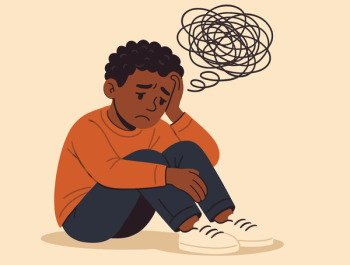
- Vol 34 No 2
- Volume 34
- Issue 2
APA Position on Medical Euthanasia
The APA's historic Position Statement provides guidance for psychiatrists in the face of a rapidly changing landscape of social values and expectations of medical services. Details here.
Early in December 2016, the American Psychiatric Association (APA) Board of Trustees passed an historic Position Statement that originated in the Assembly and was unanimously supported by the APA Ethics Committee:
The APA, in concert with the American Medical Association’s position on Medical Euthanasia, holds that a psychiatrist should not prescribe or administer any intervention to a non-terminally ill person for the purpose of causing death.
This position is now one of the strongest of any medical organization in the world regarding the practice of physician-assisted suicide by prescription medication or euthanasia by lethal injection (PAS/E) for those with non- terminal conditions. This is not just a theoretical possibility that might occur along a slippery slope following legalization of PAS/E for terminal illnesses. People with non-terminal illnesses have been legally euthanized at their own request in several countries for nearly 15 years. This has included certain eligible patients who have only psychiatric disorders.
In 2002, Belgium, the Netherlands, and Luxembourg removed any distinctions between “terminal” and “non-terminal” conditions, and between physical suffering and mental suffering, for legally permitted PAS/E. That was when patients with psychiatric disorders became eligible for this “right” in these countries. Independent consultants have to declare their condition “untreatable,” and the patient needs to declare it to be “insufferable.”
In the Netherlands, for example, for psychiatric-only cases, at least 1 consultant is required, but 3 are suggested. At least one should be a psychiatrist but does not have to be.
However, the patient can weigh in regarding the “untreatable” criterion as well. It is not based solely on what physicians have to offer, but on what the patient wishes to accept. For example, though potentially effective treatments may be offered, such as ECT, MAOIs, residential treatment, transcranial magnetic stimulation, and vagus nerve stimulation, “competent” patients may refuse these offers. That choice could make their case “untreatable.” So patients can rule on both the “untreatable” and “insufferable” axes; physicians can only opine on the former.
In the Netherlands, lethal injections are the most commonly used method to fulfill an approved patient’s death wish. This is often administered by the patient’s treating psychiatrist at home, in the office, or in specialized Levenseinde Klinieks (End of Life Clinics). Between 2008 and 2014, more than 200 psychiatric patients were euthanized by their own request in the Netherlands (1% of all euthanasia in that country): 52% had a diagnosis of personality disorder, 56% refused one or more offered treatments, and 20% had never even had an inpatient stay (one indication of previous treatment intensity). When asked the primary reason for seeking PAS/E, 66% cited “social isolation and loneliness.” Despite the legal requirement for agreement between outside consultants, for 24% of psychiatric patients euthanized, at least one outside consultant disagreed.
Some remarkable stories have been profiled in the Dutch media. For example, a woman was granted euthanasia for chronic PTSD due to childhood sexual abuse. The arguments based on personal autonomy to justify such access to PAS/E are being pushed even further in the Netherlands. Ministers of Health and Justice have proposed to their Parliament that criteria not be limited to medical conditions, but be extended to average citizens who feel they have lived “completed lives.”
From 2014 to 2015, 124 patients in Belgium were euthanized at their own request for psychiatric disorders. These patients had a wide range of psychiatric disorders: 4% had schizophrenia; 6%, bipolar; 4%, autism; 23%, dementia; 31%, depression; and 32%, personality disorders (half of which were borderline disorder). In one Belgian series that covered 2007 to 2011, diagnoses also included substance abuse, autistic spectrum disorder, OCD, ADHD, dissociative disorder, and “complicated grief.”
Supporters of these laws argue that many who were granted permission for euthanasia did not end up using it. Advocates suggest that this makes the “treatment plan” of euthanasia paradoxically lifesaving. If allowed to peer over the edge of the abyss in this sanctioned way, some choose life, knowing that an exit option is within legal reach, should they choose to use it. There is the implication -unsupported by data -that this program can reduce suicides (that are said to be characterized by much greater misadventure and shock to families).
Prominent cases profiled in the Belgian media include a pair of deaf twins euthanized on request because they were going blind, a man with gender identity disorder who was unhappy with surgical results, and another man who sought euthanasia for ego-dystonic homosexuality. Although participation by health care systems is optional, there can be consequences for not cooperating. For example, a Catholic nursing home in Belgium was fined for prohibiting a physician from entering to administer an approved lethal injection to a resident.
In the spring of 2016, at the instructions of their Supreme Court, the Canadian Parliament followed the course of these European countries. Physician-assisted suicide was legalized nationally, and terminal/non-terminal and physical/mental suffering distinctions were effaced. As in Europe, Canadian patients can refuse treatments that might forestall death -and still be eligible. However, thanks to the influence of the Prime Minister, Parliament stopped short of enacting its original intention to allow this for people with only psychiatric disorders.
Not surprisingly, several cases of psychiatric patients are working their way through the Canadian courts, demanding that there be no such discrimination for psychiatric patients. One case that received particular attention was a woman with chronic conversion disorder, who successfully fought in the courts to overrule the proscription on PAS/E for psychiatric disorders in her case. Several psychiatrists supported her pursuit of this action. So that legal precedent is now in place in Canada.
In the US, the states that permit assisted suicide by physician-prescribed medication are Oregon, Washington, California, Montana, Vermont, and Colorado. Washington, DC, just passed a law pending implementation. Unlike the European countries and Canada, eligible patients must be “terminally ill” (generally agreed as predicted death within 6 months, independent of treatment). There are advocates who are asking for the non-terminally ill to be considered eligible, including psychiatric patients. They argue from the position of parity, nondiscrimination, and other tropes embedded in mental health and disability advocacy. As documented by PBS Frontline, suicide “assistance” organizations, such as the Final Exit Network, have helped psychiatric patients to suicide, with helium-mask techniques.
Even with current laws, there are emerging regulations that directly affect psychiatric patients in those states that allow assisted suicide. The California Department of Mental Health has adopted a regulation that requires state psychiatric hospitals to provide assisted suicide services to committed patients, if terminally ill. Under this regulation, a court hearing must be held to determine whether the patient is qualified for release to obtain physician-assisted death, even over clinically based objections of the treating psychiatrist. If a patient is deemed eligible, and no outside physicians can be located, the facility must provide fatal care itself, within the hospital. Unlike refusing treatment for mental disorders, committed inpatients’ competent refusal of treatment for medical disorders (eg, diabetes) cannot be overridden, even if refusal may result in death -thus rendering their condition “terminal.”
In November 2016, a judge (who poignantly had represented Karen Ann Quinlan in 1976) ruled that a woman with chronic anorexia was competent to refuse treatment, with the likelihood that such refusal would lead quickly to her death. Arguments of experts were rejected: that her refusal was a symptom of the very illness that needed treatment, disqualifying her for this “passive voluntary euthanasia.” This opens the door in the US for other kinds of psychiatric conditions to go untreated, although they may be associated with poor insight and treatment refusal, even if the predicted outcome of non-treatment is death.
So far, other countries that have implemented physician-assisted suicide have not been able to constrain legal eligibility to the terminally ill. Inevitably, legal arguments based on equal access rights and challenges to distinctions between physical and mental suffering have resulted in slipping down a slope to eventually include non-terminal cases. Then, psychiatric patients have gotten in line to be included.
Many scholars, advocates, and legislators expect that this slippage is inevitable in the US. This is why the APA thought it critical to plant a flag in advance of that probability, protecting psychiatric patients from the likely elaboration of physician-assisted suicide, by declaring that a psychiatrist should not have a treatment plan with the goal of causing death. Focusing specifically on non-terminal patients was done deliberately, both to anticipate the future and to send a signal to countries where mentally ill patients are already being killed at their own request -often by their own psychiatrists. This focus was felt to be in the particular wheelhouse of the APA.
Several members of the APA Assembly are beginning to work on an action to formally censure this practice in those countries where physicians are colluding with psychiatric patients’ suicidality. They maintain that the fundamental ethos of psychiatry is the prevention of suicide, both on the individual level and in its public health message. Psychiatrists are trained to help people cope with such suffering, find a path to a better future -indeed, often to help people make meaning of suffering. There is concern that transforming the (long-acknowledged) freedom to commit suicide into a right engenders a duty to fulfill that right.
The APA position implies that, even where legal for the non-terminally ill, it is neither the duty of a psychiatrist to fulfill that right, nor is it ethically appropriate to do so. Some (in the Belgian press) have argued that an American association does not have a place in the discussion of medical and psychiatric practices, which make most sense when seen in the context of different cultures. However, there is an understanding in the domain of medical ethics that there are some principles that transcend cultures.
The Ethics Committee of the World Psychiatric Association (WPA) has crafted a position similar to that of the APA, which will be submitted for a membership vote at the 2017 World Congress in Berlin. If endorsed, the WPA would be acknowledging that, on this particular issue, the ethical proscription against helping psychiatric patients to commit suicide may be so antithetical to the fundamental ethos of psychiatry that it should indeed be applied worldwide.
Bottom line
With the growing number of states legalizing physician-assisted suicide, the time is coming when these requests will be initiated by psychiatric patients in the US. If legal trends in other countries are replicated here, psychiatrists will have to consider whether allying with non-terminally ill patients to fulfill their suicidal feelings and hopes is appropriate either ethically or clinically. The APA has anticipated this. Its Position Statement provides guidance for psychiatrists in the face of a rapidly changing landscape of social values and expectations of medical services.
MORE ABOUT Mark S. Komrad, MD
[[{"type":"media","view_mode":"media_crop","fid":"57031","attributes":{"alt":"","class":"media-image media-image-right","id":"media_crop_4477445902750","media_crop_h":"0","media_crop_image_style":"-1","media_crop_instance":"7200","media_crop_rotate":"0","media_crop_scale_h":"200","media_crop_scale_w":"168","media_crop_w":"0","media_crop_x":"0","media_crop_y":"0","style":"font-size: 13.008px; float: right;","title":" ","typeof":"foaf:Image"}}]]Dr. Komrad was the host of a call-in radio talk show about psychiatry that aired in 43 states. His most popular shows were open-phone hours, and a particularly common question was about how to convince a troubled loved one or friend to get a psychiatric evaluation. Brainstorming about this with numerous callers led him to develop these consultations as a specialty in his psychiatric practice and eventually led to the publication of the methods in You Need Help: A Step-by-Step Plan to Convince a Loved One to Get Counseling. He now travels the country speaking to many mental health organizations about these methods, and the National Alliance on Mental Illness uses the book in their Family-to-Family training program.
Another of his interests is addressing the stereotypes and negative depictions of psychiatrists and psychiatric treatment in the media. To clarify the role of psychiatry for a public that is often reluctant to consult psychiatrists, he’s taken part on radio and televisions forums and consulted on several Hollywood movies.
As a professional ethicist, he teaches about ethical issues in psychiatry, often using movie portrayals of both ethical and unethical psychiatric treatments. He also speaks widely to colleagues about the emerging trends in Europe and Canada of providing euthanasia to some psychiatric patients who request it, concerned that this practice will eventually reach the US. He was instrumental in crafting the American Psychiatric Association’s Position Statement on this matter.
Disclosures:
Dr. Komrad is Ethicist-in-Residence for the Sheppard Pratt Health System and a Member of the APA Ethics Committee; he is also on the Faculty of Psychiatry at Johns Hopkins and the University of Maryland. Dr. Komrad’s opinions are his own, and he is not officially representing the APA in this article, nor Sheppard Pratt.
Dr. Komrad reports no conflicts of interest concerning the subject matter of this article. Dr. Komrad’s opinions are his own, and he is not officially representing the APA in this article, nor Sheppard Pratt.
References:
For further reading
• Blake J. Man seeks euthanasia to end his sexuality struggle. June 9, 2016.
• Emanuel E. Attitudes and practices of euthanasia and physician-assisted suicide in the United States, Canada, and Europe. JAMA. 2016;316:79-90.
• Groenewoud J, van der Heide A, Onwuteaka-Philipsen BD, et al. Clinical problems with the performance of euthanasia and physician-assisted suicide in the Netherlands. N Engl J Med. 2000;342:551-556.
• Heneghan T. Catholic nursing home fined thousands in euthanasia case. The Tablet. July 5, 2016.
• Kim S, De Vries RG, Peteet JR. Euthanasia and assisted suicide of patients with psychiatric disorders in the Netherlands 2011 to 2014. JAMA Psychiatry. 2016;73:362-368.
• Lemmens W, Lemmens T, Caplan A. The dangers of euthanasia on demand. Chicago Tribute. October 17, 2016.
• PBS. The Suicide Plan. http://www.pbs.org/wgbh/frontline/film/suicide-plan/. Frontline. Accessed January 11, 2017.
• Pies RW. Physician-assisted dying for adolescents with intractable mental illness? Psychiatric Times. May 2016;1,27-31.
• Pies RW. Physician-assisted suicide and the rise of the consumer movement. Psychiatric Times. August 2016;40-43.
• Schmidt S. Anorexic woman weighing 69 lbs has right to starve, court rules. Washington Post. November 22, 2016.
• Snijdewind M, Willems DL, Deliens L, et al. A study of the first year of the end-of-life clinic for physician-assisted dying in the Netherlands. JAMA Int Med. 2015;175:1633-1640.
• Thienpont L, Verhofstadt M, Van Loon T, et al. Euthanasia requests, procedures and outcomes for 100 Belgian patients suffering from psychiatric disorders: a retrospective, descriptive study. BMJ Open. 2015;5.
• Winter M. Deaf Belgian twins going blind choose to be euthanized. USA Today. January 14, 2013.
Articles in this issue
over 8 years ago
Introduction: Violence Toward Staff in Health Care Settingsover 8 years ago
Depressive Symptoms Associated With Aggressionover 8 years ago
The Role of Psychiatrists in Countering Violent Extremismover 8 years ago
Exercise and Depression in Youthover 8 years ago
A Crisis in the Public Service Psychiatric Workforceover 8 years ago
Top Papers That Can Change Your PracticeNewsletter
Receive trusted psychiatric news, expert analysis, and clinical insights — subscribe today to support your practice and your patients.














